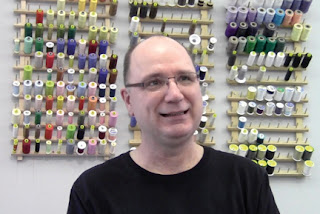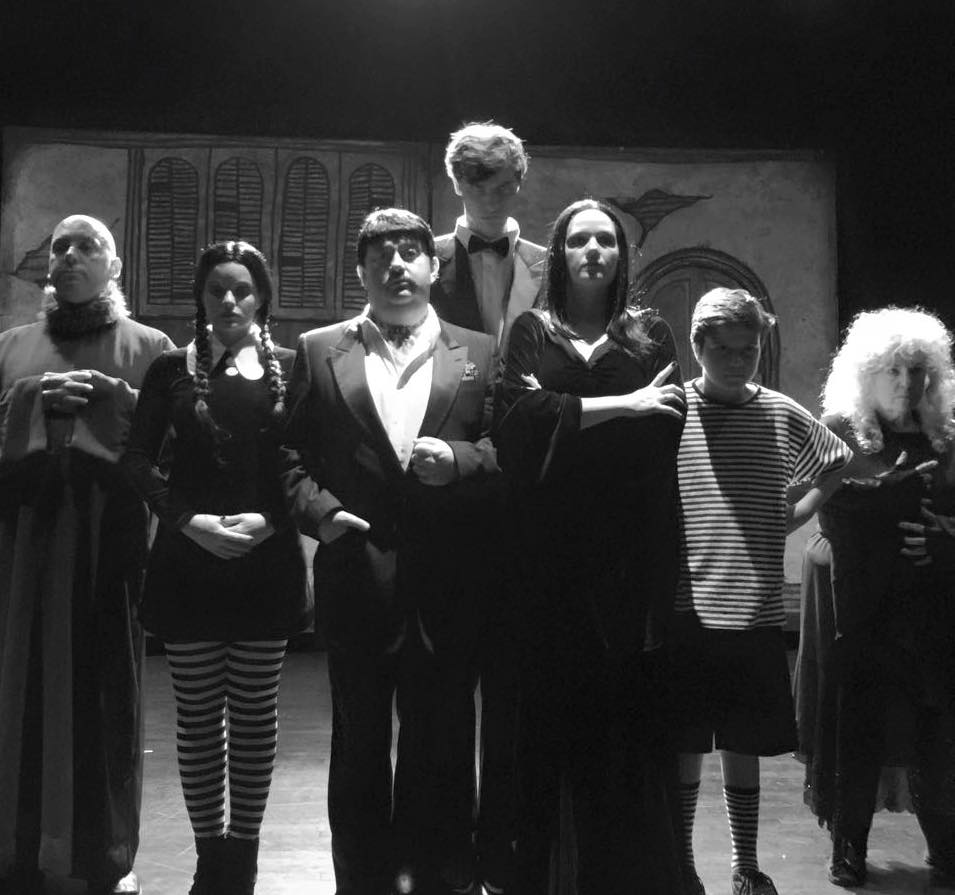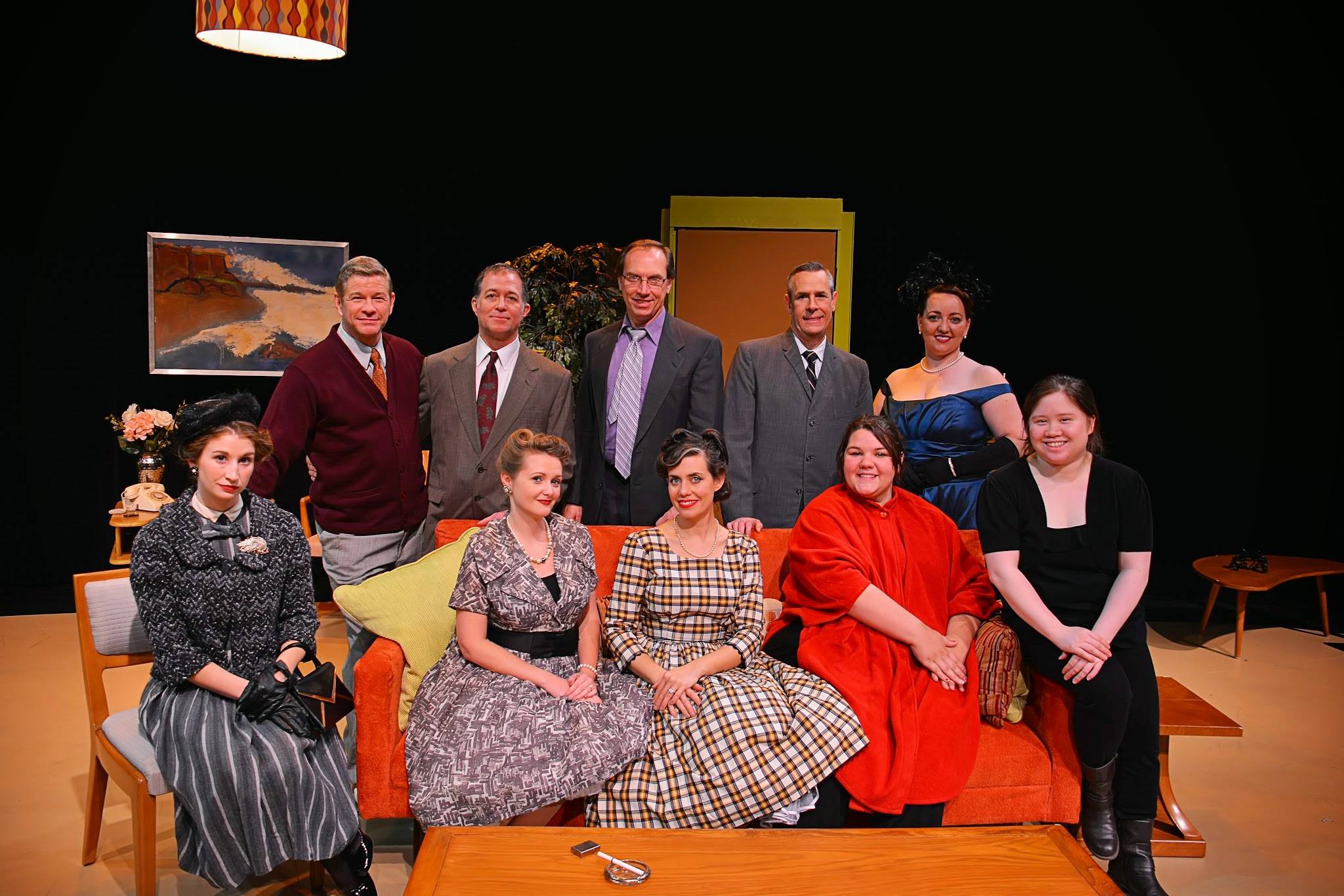Interview by Scott Dowd.
Dan Fedie
Creating any piece of performance art is a series of collaborations usually motivated by the vision of one individual. In the case of ballet, that lead is provided by the choreographer who works with the dancers to physically and emotionally tell a story. The choreographer and artistic director bring together teams of designers whose creativity establishes mood, time and place, enhances focus, and extends the emotional impact of the performance. Although we see their names in the program, many of these designers are unknown to the audience. Some of them – like Dan Fedie, who has been costume master of the Louisville Ballet for 23 years – rarely have the opportunity to sit in the audience and enjoy the finished product because they are always back stage, managing the logistics of each performance. When artistic director Bruce Simpson discussed the impact of the contributions Dan Fedie has made to the company, he said: “Dan has been a key to the success of this company. There’s nobody who has been here longer or put more into the achievement of our goals over time.”
DF: I didn’t really get into the costuming business until after high school. I started in college at the University of Wisconsin, La Crosse, where I got my degree in speech and theatre. I freelanced for two years and did an internship at Studio Arena Theatre in Buffalo, New York. Then I got my master’s degree in costume design from the University of Illinois. After that I moved to Louisville and started working. I found that my strengths were really in the construction of costumes more than design. I consider myself more a costumer than a designer.
SD: What are your main areas of responsibility as costume master?
DF: I’m basically manager of the costume shop. I’m in charge of deciding what costumes need to be built, pulled from storage and fitted or rented. I also do a little bit of designing if there is a problem with a costume that can’t be fit. When that happens, I go back and try to recreate that costume using the designer’s specifications. A lot of times the designer is not here to give me that information, so we do the best we can to maintain the integrity of the designer’s vision.
SD: What percentage of the costumes do you build in the shop?
DF: We build a few and rent about 25 percent of our costumes each season. The other 75 percent comes from our rep, which is extensive. It covers more than 45 years of ballet.
SD: Once the season is over, do your costumes just go downstairs to be stored?
DF: Costume and scene rental is actually an important revenue stream for the Louisville Ballet, so we pack them up and send them out as often as possible. I’ve sent costumes as far away as Israel, but most of our rentals are within the United States. I just sent some costumes off to Los Angeles, Salt Lake City and Florida.
SD: How many counterparts do you have in this country?
DF: There are quite a few ballet companies of varying size. I probably work with 10 to 15 shop managers on a regular basis.
 |
| Helen Daigle. Photo by Peter Mueller, 2009. |
SD: You have been with Louisville Ballet for more than one-third of its sixty-year history. What are your thoughts on its direction today.
DF: It has grown a lot. When I came on board 23 years ago, Alun [Jones] and Helen [Starr] were at the helm. They had great vision and moved the Louisville Ballet from being a small civic company towards being one of America’s premiere regional companies. They were here 28 years. When Bruce [Simpson] took over in 2002, he had great momentum and vision to continue that trend and develop it into what it is now. They each brought a tremendous amount to the table artistically and kept in tune with what the city needed and appreciated. From a costume perspective, we made a sea change in 1995 when the company constructed the building on Main Street and moved from the converted firehouse at Bardstown Road and Rosewood Avenue in the Highlands. Up to that point, it was a constant battle to preserve the costumes because we had no climate control. We were running fans constantly, hanging bags of charcoal, changing out hangers to keep things from rusting or dry rotting.
SD: You must have worked with a lot of dancers over the years.
DF: I have a bulletin board filled with pictures, many of whom are no longer dancing. Ballet is such a special art form, but an individual dancer’s career is dreadfully brief. The body can only take so much, but it is amazing what they are able to accomplish. It’s kind of like a relay race where each runner gives everything they have during their leg and then passes the baton to the next person. That’s why Donna (my assistant and company shoe manager) and I do everything in our power to prevent injuries that can shorten or prematurely end a career.
SD: The 60th anniversary celebration at the Brown Theatre will include a new work by resident choreographer Adam Hougland. What else will be on the bill?
DF: It’s a compilation representing the growth of the Louisville Ballet over the last ten years. We’re going back to include a lot of works that have been introduced since the company’s 50th season when Bruce stepped in. Along with Adam’s new piece, we’ll be doing Lambarena, a Val Caniparoli piece that we did about five years ago; we’ll be doing Balanchine’s Theme and Variations; and we’ll be setting Mikelle Bruzina’s Sensei, a piece she has developed over the past two years that draws on her Japanese heritage – it looks at family life from childhood to mastery.
SD: Louisville Ballet gives its dancers a
lot of opportunity to develop as choreographers and present pieces on the larger stage. And, of course, Adam Hougland has set new ballets on this company for five years or more. From speaking with him, I know that he is very much involved in the design process. Tell me about how you will translate his vision to the stage.
lot of opportunity to develop as choreographers and present pieces on the larger stage. And, of course, Adam Hougland has set new ballets on this company for five years or more. From speaking with him, I know that he is very much involved in the design process. Tell me about how you will translate his vision to the stage.
DF: A lot of it is just listening to the
choreographer – what they want and in what direction they want to go. I like to know about anything that has inspired him. I also like to listen to his music because that will evoke a feeling in me. In this particular case, I also take into account the fact that this is our 60th anniversary and try to find expression for that aspect of the piece. There are a lot of elements, and I am processing them all as I work through the productions that precede it. I will come up with some ideas; he’ll take a look at them; and I’ll take his comments and digest them. Then I’ll come back and present my vision until we’re both headed in the same direction. It’s really about finding things that we have in common, but it’s ultimately the choreographer’s vision that appears on stage.
choreographer – what they want and in what direction they want to go. I like to know about anything that has inspired him. I also like to listen to his music because that will evoke a feeling in me. In this particular case, I also take into account the fact that this is our 60th anniversary and try to find expression for that aspect of the piece. There are a lot of elements, and I am processing them all as I work through the productions that precede it. I will come up with some ideas; he’ll take a look at them; and I’ll take his comments and digest them. Then I’ll come back and present my vision until we’re both headed in the same direction. It’s really about finding things that we have in common, but it’s ultimately the choreographer’s vision that appears on stage.
SD: How much time does that process take?
DF: It can be very time consuming. But it is very rewarding when it is finished.
SD: What music has Adam chosen for this piece?
DF: It’s set to Two Fanfares for Orchestra: La Tromba.
SD: How many ballets are you currently working on?
DF: We’re getting ready for Cinderella, which, at this point, will require four new costumes. I hope it won’t be more than that, but it will depend on the fittings. Of course, there will be repairs as we go along, because some of the pieces are from the original production that was built many years ago. So we’ll look at the condition of the fabric to decide our next steps.
SD: I was fortunate enough to go downstairs to your costume storage for the video piece we created on Arts-Louisville.com. How many costumes do you have in the basement?
DF: We probably have 9 or 10 full-length ballets down there, and 400 to 500 small ballets – 10,000 to 15,000 garment pieces in all.
SD: Does that include the shoes?
DF: No. Shoes are another world altogether. Having my training in theatre, I was amazed when I moved into the ballet world at what this art form commands as far as footwear is concerned. If you don’t have the proper footwear to do the dance, you risk injury. It is so critical and you have to order far ahead because it takes a long time to receive the shoes.
SD: How long does it take?
DF: It can take up to a year to get an order of shoes in for a dancer. Donna Lawrence-Downs (my shoe manager) and I are trying to work out who we think will be here next season so we can decide when to place the orders.
SD: Why does it take so long?
DF: A lot of these companies are in Europe and they close over the summer months. So we have to have these orders in process before that to be sure we get them in August when we come back.
SD: Bruce Simpson was telling me some dancers have a specific artisan who crafts their shoes for their entire career.
DF: Many do. It really depends on the maker. The pointe shoe industry right now is aging. A lot of the most talented makers are getting up there in years and we’re hearing constantly that this person or that person has retired. So dancers find themselves back in the market looking for that perfect match.
SD: Sounds like marriage.
DF: There are definitely some parallels. Although they may never meet the person who makes those shoes, that craftsman is supporting their career. That artisan plays a significant part in determining how long that career will continue.
SD: And that’s only pointe shoes.
DF: Yes. There are also ballet slippers, canvas or leather shoes, and then there are character boots. Those have a harder sole with a hard heel that can be used for character dances such as the Czardas where they stomp the feet and you want to hear the heel. Then there is the ballet boot, a soft boot the men wear. They have to be soft so that when they point their foot it extends the line through the toe. That gets to be pricey because most of these boots are custom made. They range anywhere from $350 to $600 a pair. So when I do order a pair, I want them to last a long time and I’m very, very protective of them. Once the show is done, they go back into stock. They’re hung up so they don’t get crushed and are used only for certain productions or roles and that’s it.
SD: With that kind of meticulous care, how long will a pair of boots last?
DF: It really depends on the choreography. The boots we had built for our new Nutcracker are already three years old and they will probably last another three to four years. If the leather begins to stretch it allows the foot to roll inside the boot and that makes the dancer prone to injury. I try to do one to two new pair a year if I can afford to do it.
SD: The Nutcracker and Cinderella also include the company’s beautiful headgear collection.
DF: When we built the new Nutcracker, Bruce was very involved in the creation of each costume element from fabric selection to headpieces. And Cinderella has its own set of headpieces constructed many years ago by Alun Jones. He will be taking a look at those again because he wants to spruce it up.
SD: So Alun will be involved in this production?
DF: He is the choreographer of this piece and because of that, we bring Alun and Helen Starr back in to stage the production. Alun is also the listed designer on this program, so he has control as to how the show actually looks and what needs to be worked on. When we are building new costumes, we bring him in for fittings. It’s really important to maintain the integrity of the production, and the choreographer is at the top of the pyramid. We want to make sure our productions are always reaching the highest level.
SD: Tell me about the relationship of the choreographer to the designers – because it’s not only costumes, there are lighting and set designers as well, and it all has to work together.
DF: That’s why the designers do a combined presentation to be sure everything is working together as one cohesive unit. We’re looking at color and atmosphere to put together the entire picture on paper. It’s important to know how color works with light, how color works on color, and to make costumes that allow you to see the characters. If you want them to pull forward and be the center, you have to design above and beyond what the other characters are. Then the scenic designer has to decide how to make that happen with what they’re doing.
SD: Unlike the dancers, you don’t have a limitation on your career. What’s in the future for Dan Fedie?
DF: I don’t know. This job is physically demanding and takes lots of long hours. It can be hard to get up in the morning sometimes. But I love where I am. The Louisville Ballet is a creative force in this community, and I am proud to be part of an organization in which everyone from the corps de ballet to the artistic director insists on maintaining the highest level of production every time the curtain goes up.
Louisville Ballet presents Cinderella at The Kentucky Center March 9 & 10. The 60th Anniversary Celebration will take place at The Brown Theatre April 13 & 14. For ticket information, call The Kentucky Center Box Office at 502.584.7777, or go to www.kentuckycenter.org.





